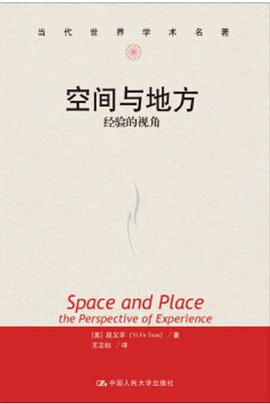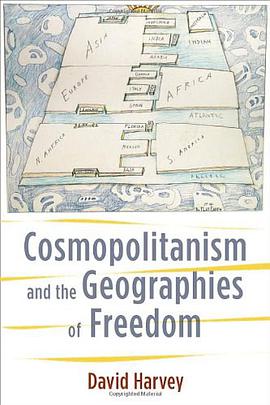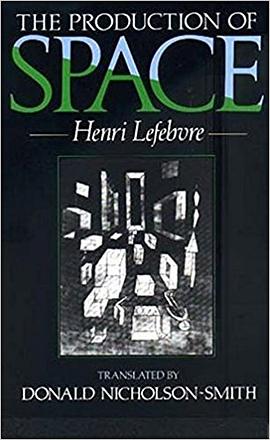空间
Cosmopolitanism and the Geographies of Freedom 豆瓣
作者:
David Harvey
Columbia University Press
2009
- 7
Liberty and freedom are frequently invoked to justify political action. Presidents as diverse as Woodrow Wilson, Franklin Delano Roosevelt, John F. Kennedy, Ronald Reagan, and George W. Bush have built their policies on some version of these noble values. Yet in practice, idealist agendas often turn sour as they confront specific circumstances on the ground. Demonstrated by incidents at Abu Ghraib and Guantánamo Bay, the pursuit of liberty and freedom can lead to violence and repression, undermining our trust in universal theories of liberalism, neoliberalism, and cosmopolitanism.
Combining his passions for politics and geography, David Harvey charts a cosmopolitan order more appropriate to an emancipatory form of global governance. Political agendas tend to fail, he argues, because they ignore the complexities of geography. Incorporating geographical knowledge into the formation of social and political policy is therefore a necessary condition for genuine democracy.
Harvey begins with an insightful critique of the political uses of freedom and liberty, especially during the George W. Bush administration. Then, through an ontological investigation into geography's foundational conceptsspace, place, and environmenthe radically reframes geographical knowledge as a basis for social theory and political action. As Harvey makes clear, the cosmopolitanism that emerges is rooted in human experience rather than illusory ideals and brings us closer to achieving the liberation we seek.
Combining his passions for politics and geography, David Harvey charts a cosmopolitan order more appropriate to an emancipatory form of global governance. Political agendas tend to fail, he argues, because they ignore the complexities of geography. Incorporating geographical knowledge into the formation of social and political policy is therefore a necessary condition for genuine democracy.
Harvey begins with an insightful critique of the political uses of freedom and liberty, especially during the George W. Bush administration. Then, through an ontological investigation into geography's foundational conceptsspace, place, and environmenthe radically reframes geographical knowledge as a basis for social theory and political action. As Harvey makes clear, the cosmopolitanism that emerges is rooted in human experience rather than illusory ideals and brings us closer to achieving the liberation we seek.
视觉隐喻与空间转向 豆瓣
作者:
高燕
2009
- 9
《视觉隐喻与空间转向:思想史视野中的当代视觉文化》内容简介:当前,视觉机制的高位主宰和视觉文化的广泛渗透带给人类前所未有的愉悦体验,也日益导致个体的压抑和时空的迷幻。《视觉隐喻与空间转向:思想史视野中的当代视觉文化》以空间转向和视觉隐喻理论及其相互关系作为切人点,在思想史的视野中分析当代视觉文化,揭示出隐藏其后的视觉隐喻问题和20世纪下半叶以来西方思想“空间转向”的趋势,探究眼睛的历史性、图像时代的基本性质和图像时代美之表现形式,确立视觉隐喻与空间转向、当代视觉文化的深刻关联,在此基础上具体剖析当代电影、电视、手机、图像再现中的女性等典型个案,追踪生活世界图像化和审美化的根源和结果。
《视觉隐喻与空间转向:思想史视野中的当代视觉文化》所处理的材料主要有:中国古代有关五官、视觉的材料,中国当代视觉文化现状与典型文本,西方自古希腊以降有关视觉隐喻、空间转向和视觉文化的哲学、美学、社会学论著以及文艺作品。鉴于论题涉及的范围主要是西方思想中的视觉隐喻、空间转向和当代中西方的视觉文化,《视觉隐喻与空间转向:思想史视野中的当代视觉文化》对中国古代思想中视觉和视觉隐喻的考察主要从与西方思想对照的角度选取,并非对它们的全景式考察。
从研究对象和涉及材料出发,《视觉隐喻与空间转向:思想史视野中的当代视觉文化》采取以下研究方法:在对材料进行分类与梳理的基础上,以问题为中心,从个人视角出发,采取比较文化学、语源学分析、文化研究、文本分析、主题学、类型学分析相结合的方法,从材料中抽绎、建构出符合事实与逻辑的有效体系。鉴于任何一种判断都不可避免地存在强行剪裁丰富多样的经验事实以适应条分缕析的概念图式的缺憾,《视觉隐喻与空间转向:思想史视野中的当代视觉文化》将重点放在描述、阐释和说明,在必须做出判断时,也是从对理论材料和现实经验的描述、阐释和说明中得出的。
《视觉隐喻与空间转向:思想史视野中的当代视觉文化》所处理的材料主要有:中国古代有关五官、视觉的材料,中国当代视觉文化现状与典型文本,西方自古希腊以降有关视觉隐喻、空间转向和视觉文化的哲学、美学、社会学论著以及文艺作品。鉴于论题涉及的范围主要是西方思想中的视觉隐喻、空间转向和当代中西方的视觉文化,《视觉隐喻与空间转向:思想史视野中的当代视觉文化》对中国古代思想中视觉和视觉隐喻的考察主要从与西方思想对照的角度选取,并非对它们的全景式考察。
从研究对象和涉及材料出发,《视觉隐喻与空间转向:思想史视野中的当代视觉文化》采取以下研究方法:在对材料进行分类与梳理的基础上,以问题为中心,从个人视角出发,采取比较文化学、语源学分析、文化研究、文本分析、主题学、类型学分析相结合的方法,从材料中抽绎、建构出符合事实与逻辑的有效体系。鉴于任何一种判断都不可避免地存在强行剪裁丰富多样的经验事实以适应条分缕析的概念图式的缺憾,《视觉隐喻与空间转向:思想史视野中的当代视觉文化》将重点放在描述、阐释和说明,在必须做出判断时,也是从对理论材料和现实经验的描述、阐释和说明中得出的。
The Production of Space 豆瓣
La production de l'espace
作者:
Henri Lefebvre
译者:
Donald Nicholson-Smith
Wiley-Blackwell
1991
- 8
第三空间 豆瓣
Third Space: Journeys to Los Angeles and Other Real-and-Imagined Places
作者:
[美]Edward W.Soja
译者:
陆扬
上海教育出版社
2005
导论/路线/序曲
第一部分 发现第三空间
第一章 亨利·列斐伏尔不平凡的旅程
起点
路径
趋近
到达
第二章 空间性的三元辩证法
透过“阿莱夫”展望第三空间
他者化—第三化
再次概括/在前进之前
第三章 探究差异构成的空间:边缘随笔
论后现代性构成的差异
与蓓尔·瑚克斯同在第三空间
第四章 增强第三空间的开放性
空间女权主义批判
后殖民批判
第五章 异形地志学:福柯与他者性的地理历史
第二次发现
与福柯同在第三空间
第六章 历史主义空间批判再表征
新的导论
固守历史主义
第二部分 内外洛杉矶
第七章 回忆:洛杉矶城堡的异形地志学
展览会印象
主要事件:象征市政中心
第八章 外城内部:后现代世界的日常生活
“托托,我有个感觉,我们是不在堪萨斯了”
奥兰治郡及其周围若干景观
结语:外城先行
第九章 一点困顿的刺激:阿姆斯特丹与洛杉矶的当代比较
在斯坝伊街
离开斯坝伊街
后记Ⅰ:自上而下和自下而上的观点
后记Ⅱ:后大都市预览
人名中英文对照表
参考论文、书目中英文对照表
第一部分 发现第三空间
第一章 亨利·列斐伏尔不平凡的旅程
起点
路径
趋近
到达
第二章 空间性的三元辩证法
透过“阿莱夫”展望第三空间
他者化—第三化
再次概括/在前进之前
第三章 探究差异构成的空间:边缘随笔
论后现代性构成的差异
与蓓尔·瑚克斯同在第三空间
第四章 增强第三空间的开放性
空间女权主义批判
后殖民批判
第五章 异形地志学:福柯与他者性的地理历史
第二次发现
与福柯同在第三空间
第六章 历史主义空间批判再表征
新的导论
固守历史主义
第二部分 内外洛杉矶
第七章 回忆:洛杉矶城堡的异形地志学
展览会印象
主要事件:象征市政中心
第八章 外城内部:后现代世界的日常生活
“托托,我有个感觉,我们是不在堪萨斯了”
奥兰治郡及其周围若干景观
结语:外城先行
第九章 一点困顿的刺激:阿姆斯特丹与洛杉矶的当代比较
在斯坝伊街
离开斯坝伊街
后记Ⅰ:自上而下和自下而上的观点
后记Ⅱ:后大都市预览
人名中英文对照表
参考论文、书目中英文对照表




